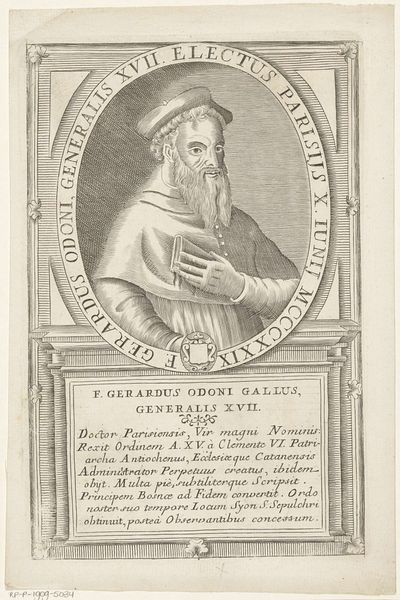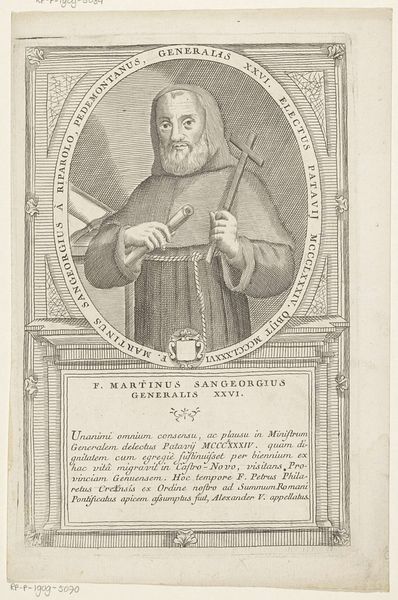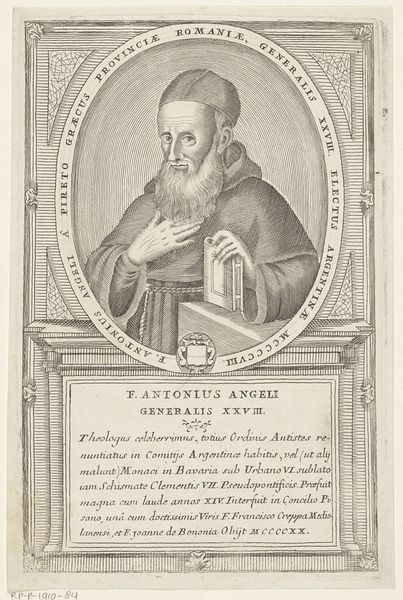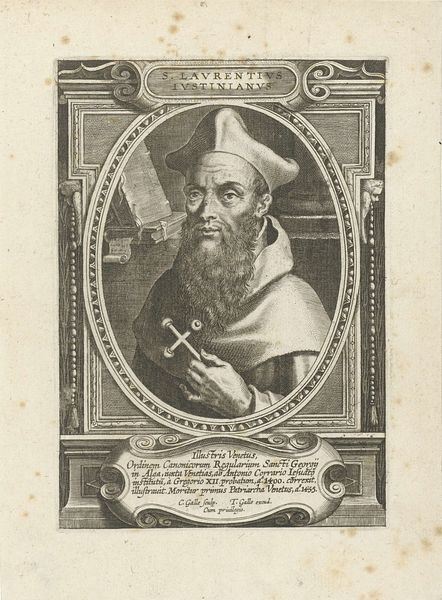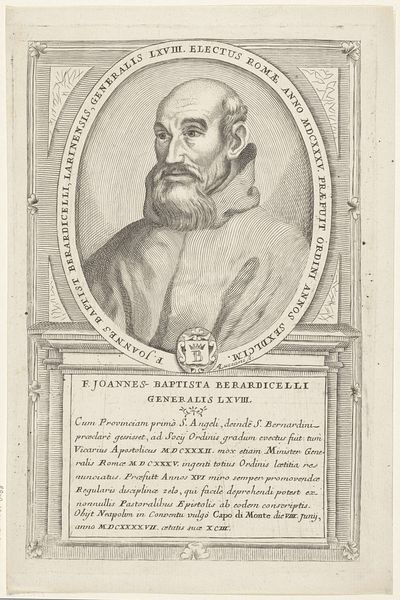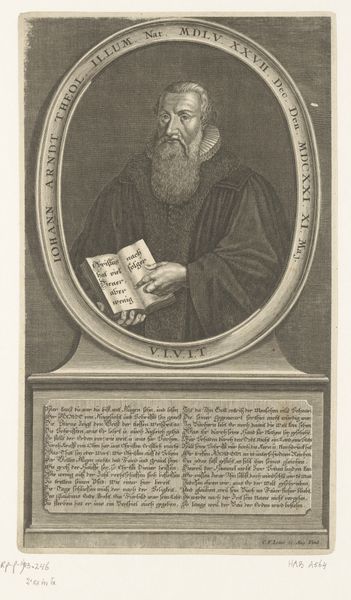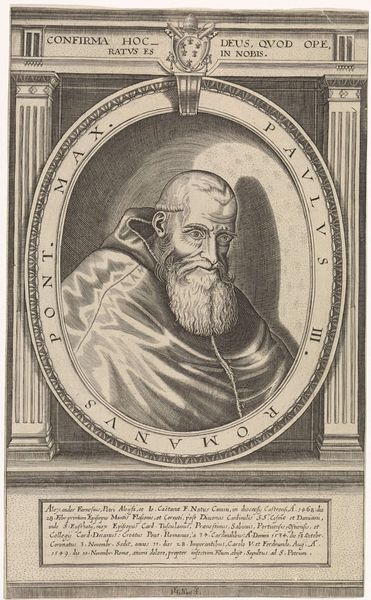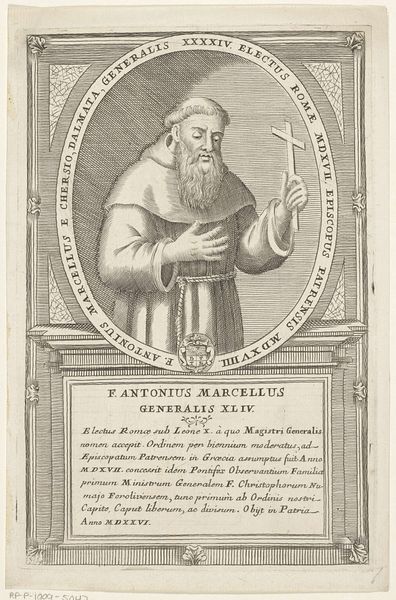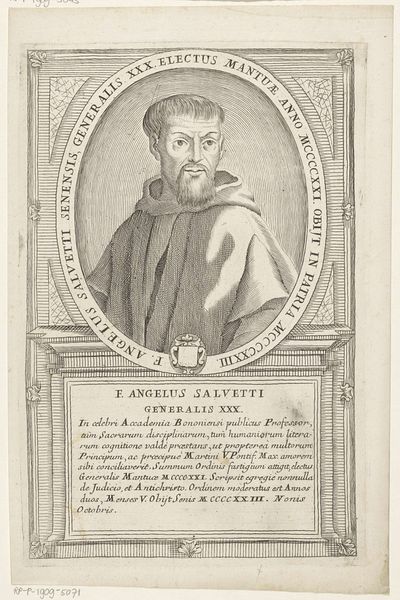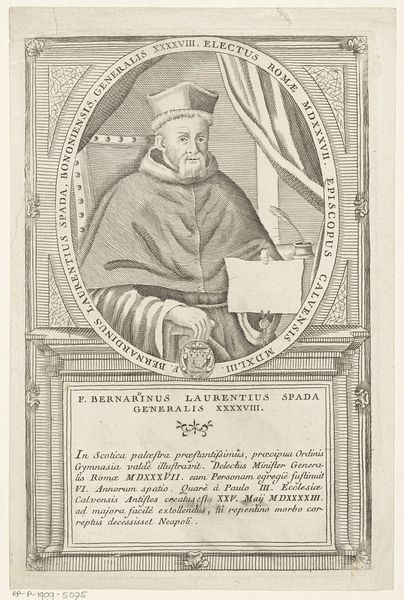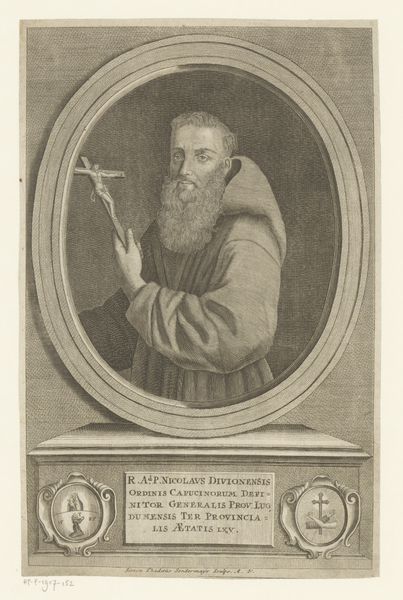
Portret van Bernardino Prati, 43ste Minister Generaal van de franciscaner orde 1710 - 1738
0:00
0:00
engraving
#
portrait
#
baroque
#
old engraving style
#
19th century
#
history-painting
#
engraving
Dimensions: height 250 mm, width 165 mm, height 139 mm, width 112 mm
Copyright: Rijks Museum: Open Domain
Curator: Let's consider this engraving, "Portret van Bernardino Prati," made between 1710 and 1738 by Antonio Luciani. As a materialist, I immediately think about the process. The engraver’s skill to transform a metal plate into this intricate portrait tells us about the labor involved. Editor: It's amazing the amount of detail achieved through engraving! What strikes me is the formal, almost severe, depiction of Prati. What do you see in this piece that maybe I'm missing? Curator: I am struck by the material choices. The lines created in the engraving form both the portrait and the lettering. In what ways did the artist navigate around and with these restraints? This piece wasn't made in a vacuum. Engravings like this one were often reproduced to disseminate information and ideas. Knowing that it depicts the 43rd Minister General of the Franciscan order tells us this was for more than personal satisfaction. Editor: So it's less about Prati as an individual and more about him as a figurehead, almost like a symbol? How did the use of a print influence who got to know about Prati? Curator: Precisely. The means of production dictate the accessibility. Engravings allowed for multiple copies to be made, furthering the reach of the Franciscan order’s influence and image. The work becomes a promotional piece. Did only the wealthy have access? How was this type of portrait viewed then versus now? Editor: I never considered the work in light of how many could view it, but seeing this work with labor and process, how accessible art truly was at one point, in comparison to now, gives me a whole new viewpoint on art and society in the 1700's. Curator: Considering art this way helps us see how intertwined art is with not just the wealthy but how materials themselves are tied to labor and influence society on many different levels.
Comments
No comments
Be the first to comment and join the conversation on the ultimate creative platform.

